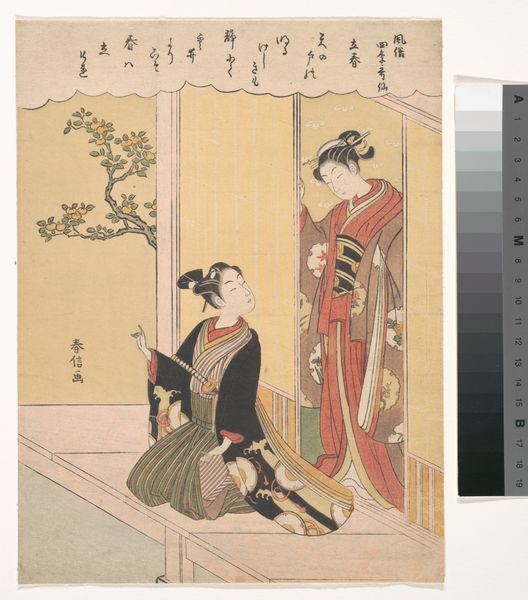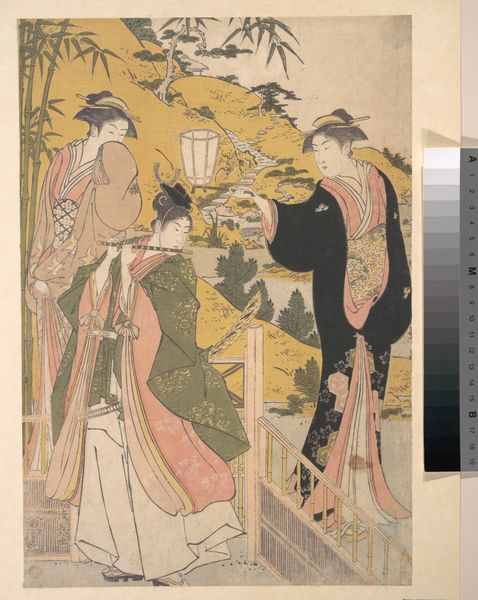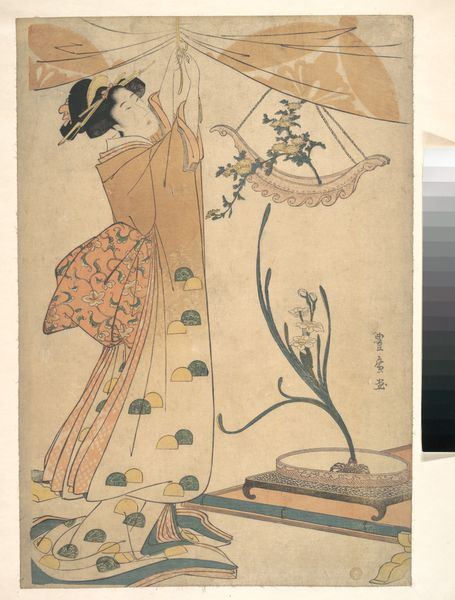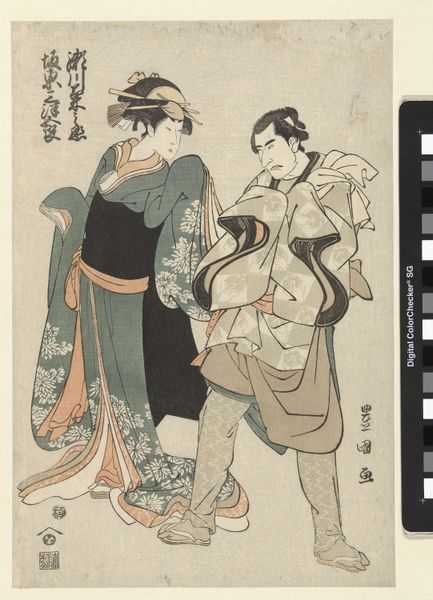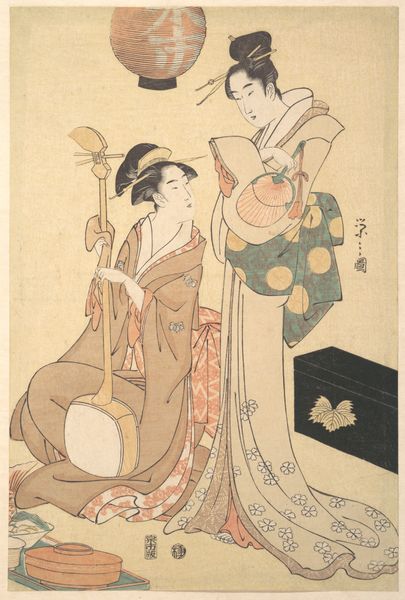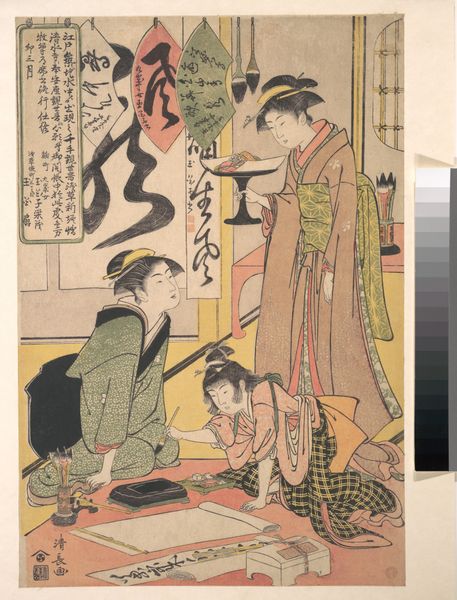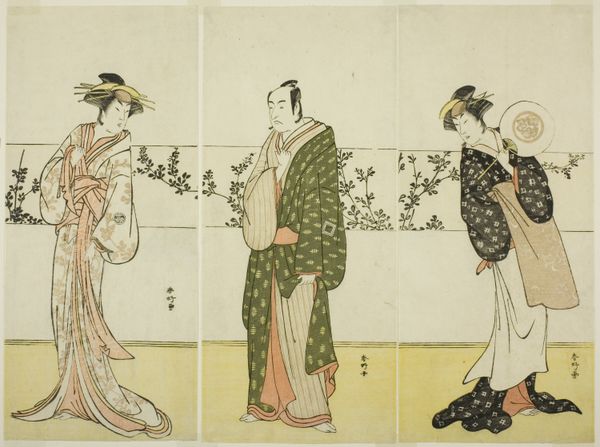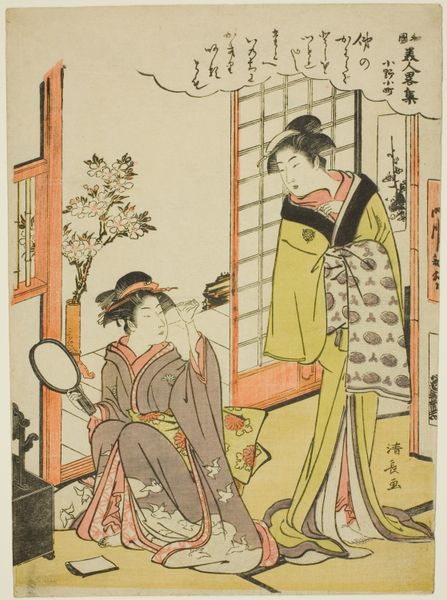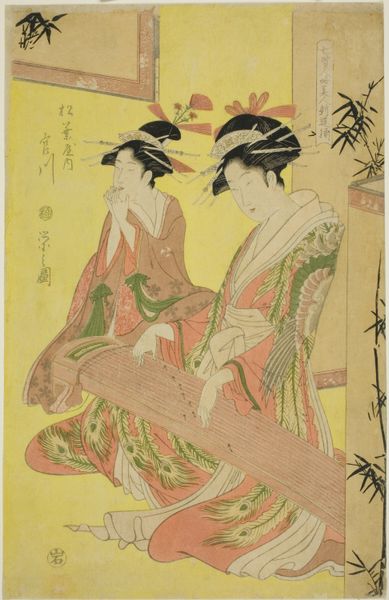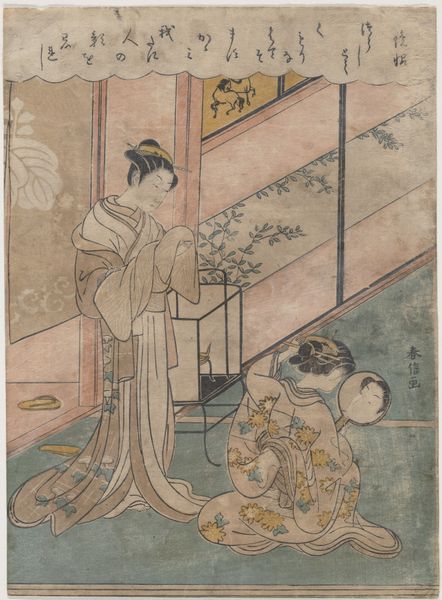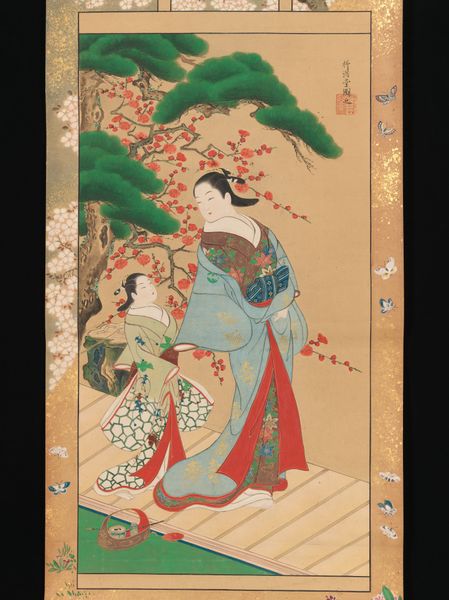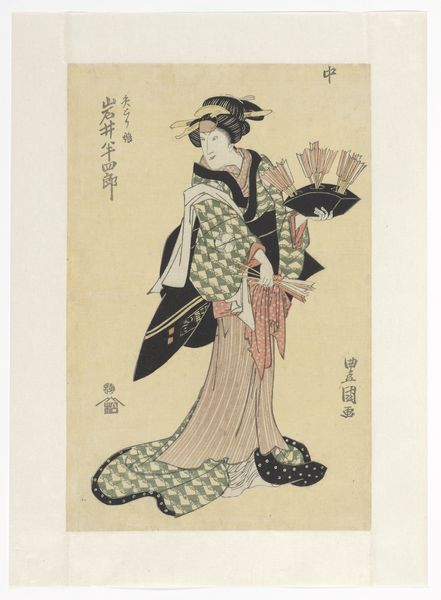
print, woodblock-print
#
portrait
# print
#
asian-art
#
ukiyo-e
#
figuration
#
woodblock-print
#
genre-painting
#
erotic-art
Dimensions: 13 x 8 3/4 in. (33 x 22.2 cm)
Copyright: Public Domain
Curator: Here we have "Courtesan and Her Maid," a woodblock print attributed to Chokosai Eisho, dating somewhere between 1615 and 1868. The print features two female figures. My first thought is of intimacy. Despite the apparent difference in status, the close proximity and the kneeling posture of one figure suggest a world of shared secrets and understood glances. Editor: Looking closely at this woodblock, the most interesting thing is the textile production; examine the complex patterning on the courtesan’s robe and the maid’s kimono. We are likely observing locally produced material. Consider the laborious process to create these robes in comparison to our own methods today; each print suggests the highly specialized labor and economic infrastructure of Edo period Japan. Curator: Absolutely. The robes themselves act as signifiers of social standing. Consider, though, how the floral motifs —the chrysanthemums especially—are powerfully symbolic. Chrysanthemums represented the Emperor and imperial family, so seeing them depicted prominently implies the high status and influence this courtesan would wield, in contrast to her maid kneeling before her. It almost has the impact of an imperial audience, refigured for the floating world of the Ukiyo-e. Editor: It is intriguing to me that the artist utilized a medium available for mass production and the dissemination of popular fashion. Even the subject matter contributes; instead of religious icons or traditional landscape scenery, the piece directs attention to the latest fashion trends and socially relevant imagery to spark debate surrounding female workers and commodification. Curator: And yet, the composition— the curves and the flowing lines, along with the considered placement of text— imbues the scene with a real sense of artistic intent beyond pure commerce. There is an implied narrative too. What is their relationship, and what significance can we give their body language? Editor: To add to the dialogue surrounding class and identity formation, the courtesan’s striking hairstyle further underscores this discourse; she wears various combs and ornaments indicating her high social status, which simultaneously enhances the visual and tactile interest of the woodblock itself and also highlights craft traditions from the time. Curator: Indeed, there’s a lot to unpack there regarding adornment as a signal. Considering how Eisho was trained under Utamaro, his unique style and technical ability allowed for the popularization of portraits, shifting visual focus towards women’s roles in society. Editor: What a remarkable window into a distant past made real. I now recognize this print showcases just how integral textiles and local material production became within Ukiyo-e prints. Curator: A lovely perspective, providing so much potential narrative for what symbols and artistry alone are capable of communicating across cultures and through time.
Comments
No comments
Be the first to comment and join the conversation on the ultimate creative platform.
